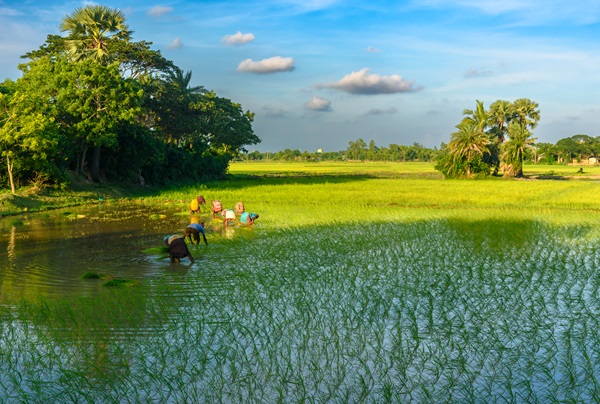.png)

Groupthink is the House View of BasisPoint’s in-house columnists.
April 5, 2025 at 11:28 AM IST
Why did God create economists? To make weather forecasters look good. So goes an old joke.
In the next couple of weeks, the India Meteorological Department will issue its first-stage long-range forecast for southwest monsoon—the lifeline of the economy. Nearly 47% of the population depends on agriculture for their livelihood, making accurate predictions critical. Yet, IMD’s track record has been rather poor.
Since 2003, when IMD introduced the two-stage forecast, actual rainfall during the season has fallen outside the forecast range almost two-thirds of the time, especially in April predictions.
The southwest monsoon season from June to September accounts for about 75% of India’s annual precipitation. The forecast is keenly awaited by the government, policymakers, farmers, industries, and financial markets alike.
While the meteorological department issued its first tentative long-range forecast based on Himalayan snowfall in 1882, nationwide predictions began only in 1989 using a 16-parameter power regression model. After failing to forecast the 2002 drought, IMD adopted a two-stage 8-parameter power regression model. The latest statistical forecasting model is based on an ensemble technique introduced in 2007.
Predicting monsoons in India’s vast, varied terrain is fraught with challenges, as it depends on factors like air pressure, temperature, mountain ranges, and ocean currents. The current model considers factors like changes in land surface air temperature in Northwest Europe, anomalies in winds and sea surface temperatures over the tropical Pacific Ocean and Indian Ocean, and fluctuation of atmospheric pressure over the North Atlantic Ocean.
These forecasts guide farmers in planning crops, governments and policymakers in preparing for droughts and floods, and industries in assessing demand.
Though the southwest monsoon’s link to economic growth has weakened in recent years, it still dictates agriculture and rural India. Notably, the sector’s lowest growth rates in the past 36 years coincided with deficient monsoons.
Forecast Failures
IMD claims “reasonable accuracy,” but data since 2003 tell another story. The actual rainfall during the monsoon season was outside the forecast error margin in 14 out of 22 years. Updated forecasts released during the end of May fare better, with IMD getting 50% of the predictions correct.
The monsoon is crucial for kharif crops as most cultivable land lacks irrigation. Central and northwest India rely on this season for more than 90% of annual rainfall. The monsoon also replenishes rivers, lakes, reservoirs, and groundwater, which are vital for irrigation and drinking water supplies. It also influences energy generation through hydropower.
IMD uses statistical and dynamical models for long-range forecast of the monsoon. However, statistical models have inherent limitations, as these are reliant on historical correlations, which falter in a changing climate.
IMD’s predictions have gone awry, especially during extreme rainfall events. The department’s first-stage forecasts have failed to predict any of the last four deficient monsoons — 2004, 2009, 2014 and 2015 — in 22 years. Rainfall below 90% of the 50-year average is deemed deficient.
To be fair, IMD’s 2015 June update had correctly predicted that year’s deficient monsoon.
IMD’s extended-range forecasts for 10 to 30 days, medium-range forecast for 3 to 10 days and short-range for up to 3 days also perform much better.
The problem is not unique to India. According to the National Oceanic Atmospheric Administration of the US, a seven-day forecast can accurately predict the weather about 80% of the time, and a five-day forecast approximately 90% of the time. However, a 10-day or longer forecast is only right about half the time. But then, isn’t the chance of getting it right when tossing a coin also just 50%?




